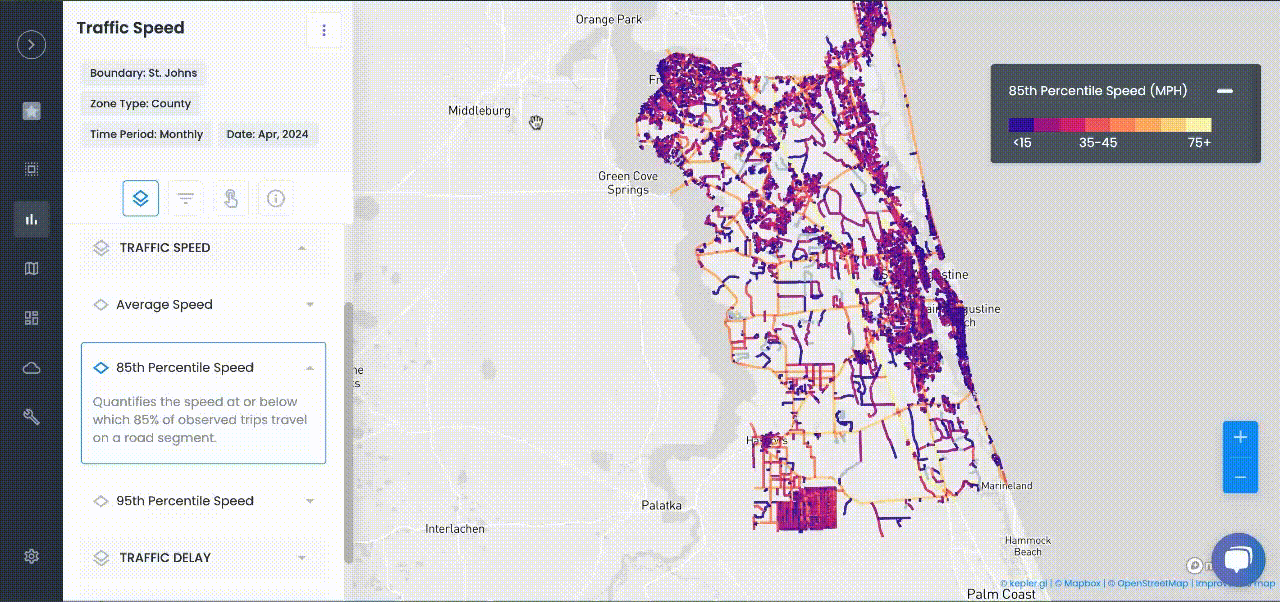
Transportation Planning
Mobility Hub Study in Thunder Bay, Ontario
How Urban SDK was used to create a comprehensive precinct plan that is transit-oriented, walkable, safe, diverse, and practical.
Overview
International civil engineering firm TY Lin is a longtime Urban SDK customer, having used the platform for a variety of urban planning studies.
One such project was for the city of Thunder Bay in Ontario, Canada. TY Lin gathered data from Urban SDK's platform to deliver a clear analysis of how effective and efficient the city's mobility hub is.
By using Urban SDK, engineers at TY Lin were able to clearly illustrate whether the city would be better served moving its transit options to a new location.

Methodology
There are a variety of indicators that reflect how suitable a location is for a transit hub. This study has grouped site comparison evaluation metrics within two pillars including, which are:
Socioeconomic
Indicators that help us understand the demographics, built form, and income characteristics of each site and determine which has more supportive land uses.
Mobility
Indicators that quantify how people, goods, and services access the transit hub to compare which site provides the best mobility benefits for residents and transit operations.
TY Lin used Urban SDK's traffic management platform to provide a planning-level analysis for the city of Thunder Bay that compares, and quantifies, the socioeconomic and mobility metrics of the existing and relocated site, informing whether there is sufficient evidence to support relocating the terminal.
The travel data obtained through Urban SDK’s platform represented a sample of trips that start or end within the city and that travel on Thunder Bay’s road network and does not include external trips. This was done to focus results in relation to Thunder Bay Transit’s service area. Trip data was obtained for a two-year period and aggregated by month, day, hour, and by origin-destination.

Findings
Hourly data was summarized by inbound and outbound trips for each of the 16 zones shown in the figure above for the same seasons, years, and periods as the travel demand analysis in the previous section. An assessment of September 2019’s weekday monthly sample trip distribution highlights that that bulk of weekday trips to/from the study area remain internal or go to areas directly adjacent to North Core, accounting for 66% of sample trips
The top origin-destination flows associated with the study area can generally be characterized by commercial and institutional land uses with 8% of sample trips going to the area surrounding Lakehead University, 9% going to the area surrounding the Lakehead Psychiatric Hospital, 12% going to area surrounding Confederation College, and 16% going to the Intercity commercial/employment district.
According to the data August weekday sample trips were 31% lower than September, however little difference is observed between the origin-destination distribution proportions. This generally suggests that there are more trips during the fall than the summer, but there aren’t significant differences in trip distribution between seasons.
Read the Full Report
Fill out the form below to read the full report on how civil engineering firms are using Urban SDK.

TRAFFIC ENFORCEMENT FEATURES
80% of citizen complaints
are a perception problem
Urban SDK provides precise hourly speed data to evaluate complaints and deploy resources efficiently for the greatest impact to public safety.
Urban SDK provides precise hourly speed data to evaluate complaints and deploy resources efficiently for the greatest impact to public safety.
Target Speeding
Identify hot spots, validate monthly speeding trends and monitor vulnerable areas like school zones.
Improve Safety
Crash and citations location information to compare speed trends month over month
Fast Response
Respond to citizen complaints sooner with address search and exportable reporting
Deploy Assets
Generate maps for traffic enforcement by time of day, location or division to deploy officers to known problem areas.
RESOURCES
Customer Success
See how public sector leaders succeed with Urban SDK.
WEBINAR
Identify speeding and proactively enforce issues
See just how quick and easy it is to identify speeding, address complaints, and deploy officers.







